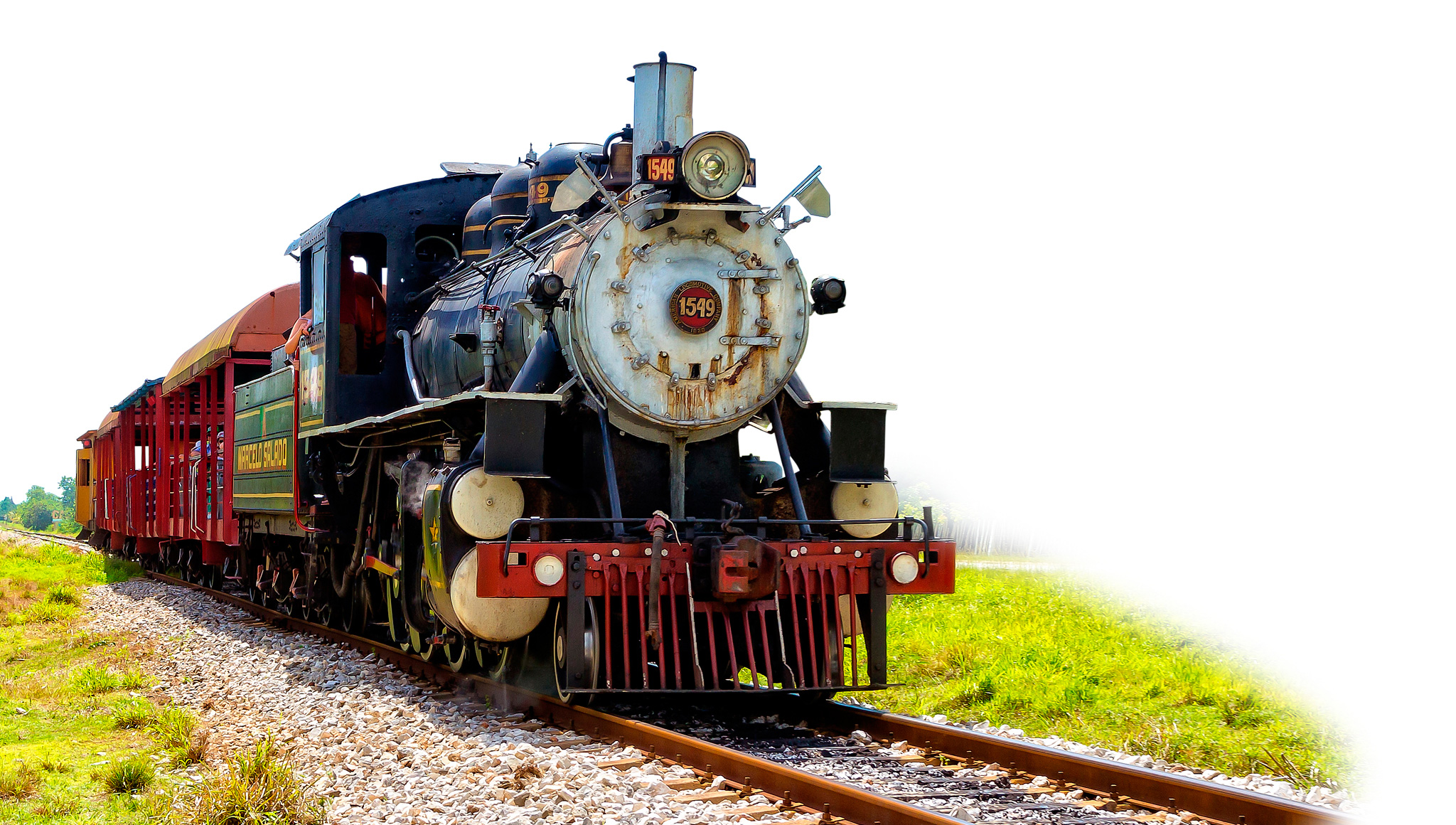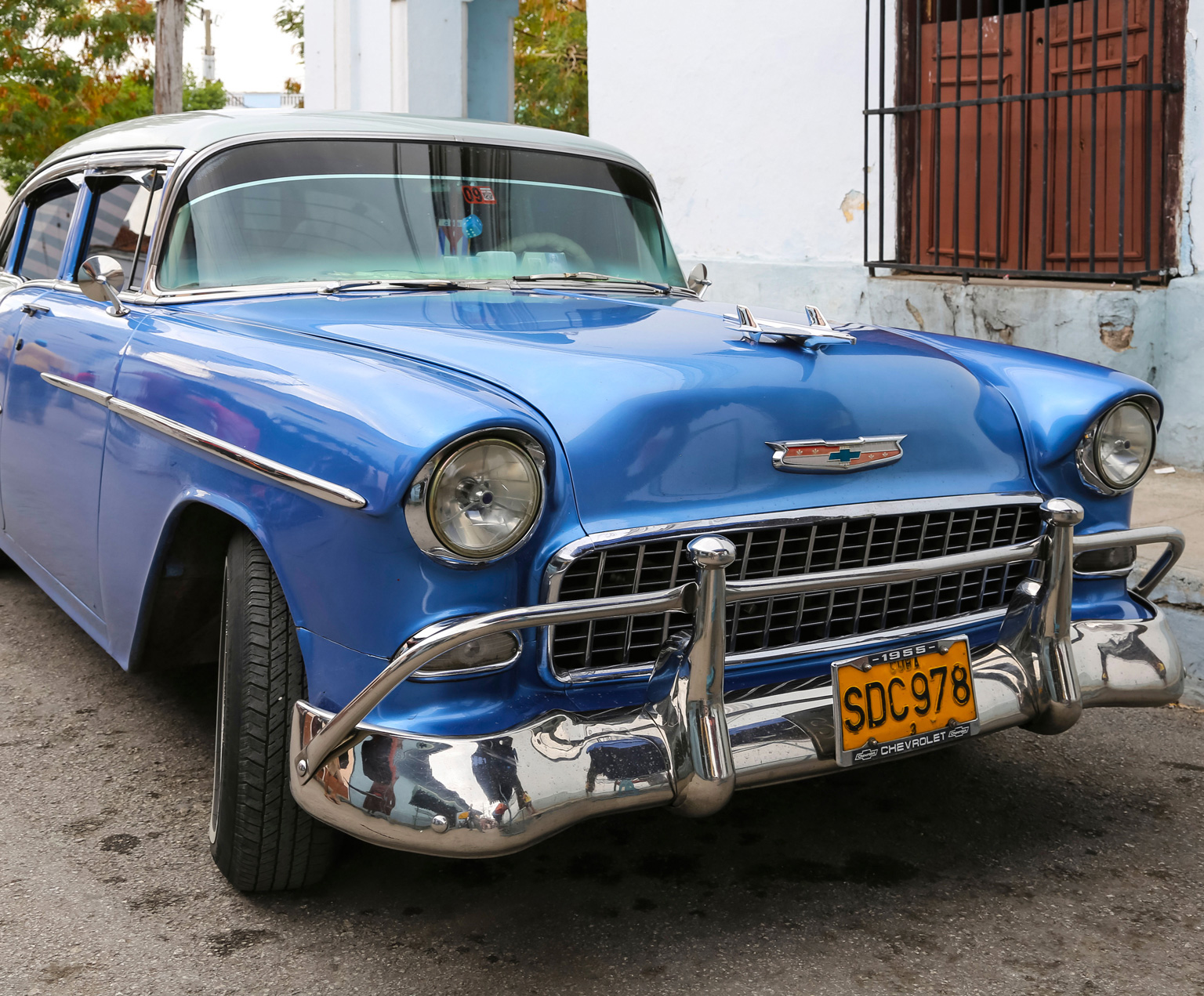AMERICAN LEGACIES
1.American Autos
Time seems to have stood still for five decades on Cuban roads, where one in every five cars dates back to before the Revolution (for further details see 1959: Revolution Triumphs). Most are American classics from the 1950s – including many iconic models that vanished from US roads years ago.

Classic American cars on a Cuban street
2.Art Deco
Cuban cities are graced with Art Deco buildings that date back to the 1930s and the heyday of Hollywood movies. The finest are the cinemas, often with rounded architectural elements and horizontal banding. These designs exemplify the architects’ desire to imbue local buildings with slick, streamlined forms, reflecting the great age of transport.

Art Deco Bacardi Building, Havana
3.Harley-Davidsons
Many pre-revolutionary Harleys still roar around the streets of Cuba, maintained by passionate harlistas who are dedicated to keeping their “hogs” on the road by whatever means.
4.Baseball
Americans introduced baseball to Cuba in the mid-19th century. Today, the island produces some excellent players. Cuban teams regularly defeat US teams at the Olympic Games.

Industriales baseball team
5.US Naval Base
When the US government wrote Cuba’s Constitution in 1902 (for further details see 1902: Independence), it included a clause called the Platt Amendment, which granted itself a perpetual lease on Guantánamo Bay. Despite thawing relations between the US and Cuba, the naval base remains a bone of contention. The US government writes a check every year for the annual lease, but the Castros (for further details see Moments in Fidel Castro’s Life) refuse to cash it.
6.Hotel Nacional
Symbolic of Havana’s decadent pre-revolutionary heyday, this hotel was built in 1930 in Spanish Neo-Classical style and was closely associated with the Mafia. Actor Marlon Brando and supermodel Naomi Campbell feature in the hotel’s celebrity guest list (for further details see Hotel Nacional).
7.Malecón
Havana’s seafront boulevard was laid out in 1902 by US Army General Leonard Woods. Now officially known as Avenida Antonio Maceo, it is lined with late 19th- century buildings and high-rise hotels (for further details see Malecón).
8.Hotel Habana Libre
This national monument opened in March 1958 as the Havana Hilton. Built in Modernist style with 630 rooms, it was the largest and tallest hotel in Latin America. The hotel also once served as Fidel Castro’s headquarters (for further details see Hotel Habana Libre).
9.Ernest Hemingway
The famous US author first came to Cuba in 1932 to fish for marlin. He fell in love with the island, and it was here that he wrote For Whom the Bell Tolls. In 1940 he bought Finca Vigía (for further details see Museo Ernest Hemingway) outside Havana, his home for 20 years.
10.Steam Trains
Creaking engines and carriages piled with sugarcane are a common sight in Cuba, which has about 50 working steam trains – more than any other country except China. Most were made in Philadelphia in the 1920s.

Cuban steam train



